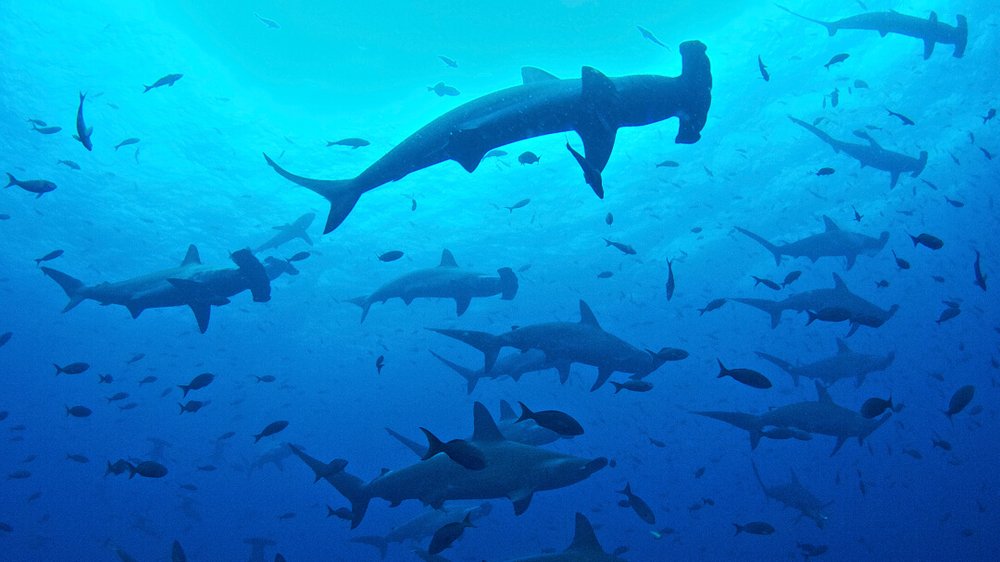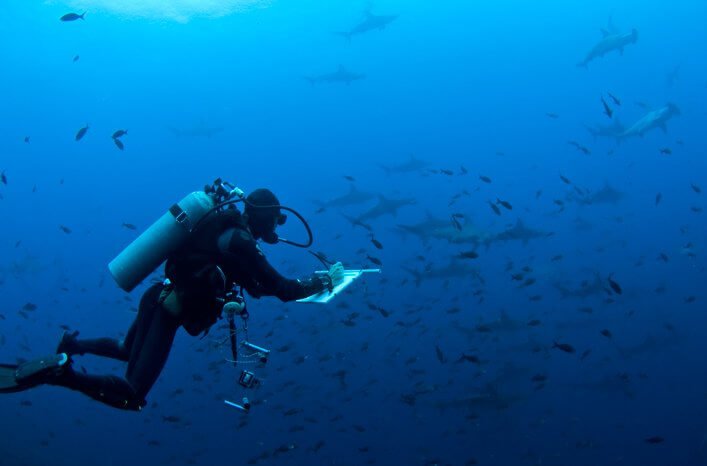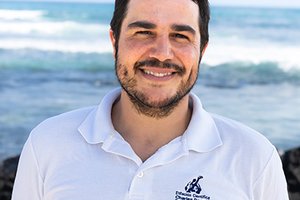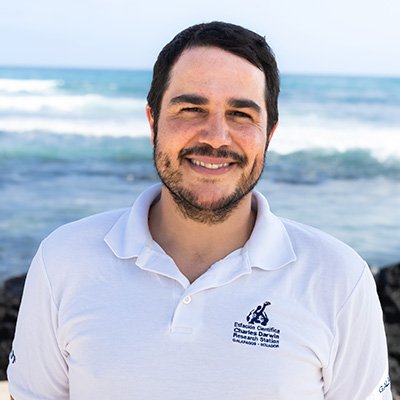
A scientific study by marine researchers from the Charles Darwin Foundation (CDF) revealed that Wolf and Darwin Islands, located in the northwest of the Galapagos Archipelago, are considered a single ecological unit with the largest shark biomass on the planet, with an average of 17.5 tons per hectare.
This amazing discovery was the result of research conducted through the use of stereo-video camera systems operated by our marine scientists, with support of park rangers from the Galapagos National Park Directorate (GNPD). The team led by CDF senior marine ecologist, Pelayo Salinas, and the contribution of partners such as Enric Sala from Pristine Seas, a National Geographic project that played a key role in the declaration of Darwin and Wolf Islands as a 15,000 square miles Marine Sanctuary.

“The first time I dove in the waters around Darwin and Wolf islands, I could not believe how many sharks were there. This area is truly a jewel in the crown of the Galápagos Islands World Heritage site” said Pelayo Salinas.

According to an economic study by National Geographic Pristine Seas, each shark in the Galapagos Islands is worth about $5.4 million over its lifetime, while a dead shark only produces $200.
Darwin and Wolf Islands have high ecological value and economic importance for the dive and tourism industry. Setting them aside as a Marine Sanctuary provides greater protection within the Galapagos Marine Reserve (GMR), aiming to ensure long-term conservation of this unique globally-important ecosystem.
Download and read the full publication:
Largest global shark biomass found in the northern Galápagos Islands of Darwin and Wolf
Pelayo Salinas de Leon, David Acuña-Marrero, Etienne Rastoin, Alan M Friedlander, Mary K Donovan, Enric Sala
Funding provided by the Lindblad Expeditions-National Geographic Fund, The Leona M. and Harry B. Helmsley Charitable Trust, Galapagos Conservation Trust, Blancpain, and Davidoff Cool Water. The funders had no role in study design, data collection and analysis, decision to publish, or preparation of the manuscript.
More information:
Shark Research
New Galápagos Sanctuary Has World’s Highest Abundance of Sharks






